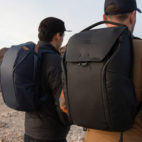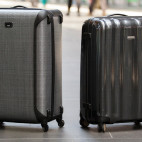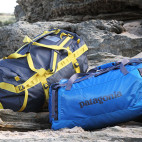Head to Head: Yeti GoBox vs. Pelican Air
We pitted Yeti’s LoadOut Go Box against Pelican’s 1525 Air Case to see which is the toughest of the tough hardsided gear cases out there!
As someone who hauls around a lot of gear, having a solution that keeps my gear protected, organized and accessible both in and outdoors is key to making the trip run smoothly. I got my hands on two of the most popular hardsided gear cases available and put them through the Carryology ringer to find out which is the top piece of carry.
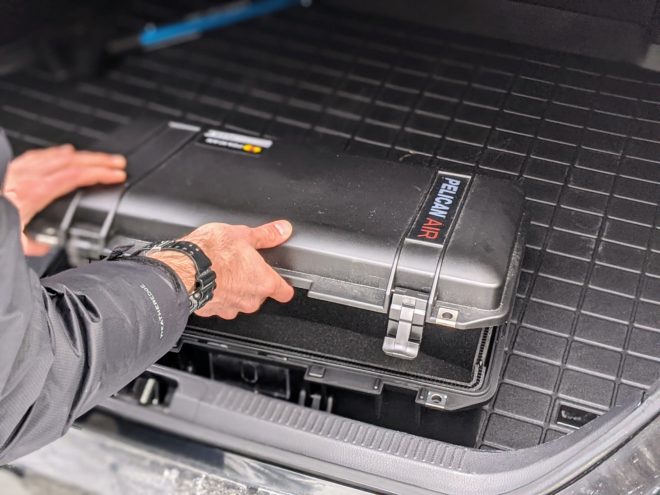
Why Hardsided Gear Boxes?
Simply put, having a hardsided gear case ensures adventures run more smoothly. They work well to hold and keep essential gear organized. They protect expensive and fragile electronics from being smashed or damaged by water and dust. They transition easily from the house, to the back of a truck and to camp.
Previously I used large plastic tubs as gear boxes. While cheap, they were always cumbersome to carry, never kept gear particularly well organized, and water would always find a way to creep under the top. Needless to say they were a pain to use.
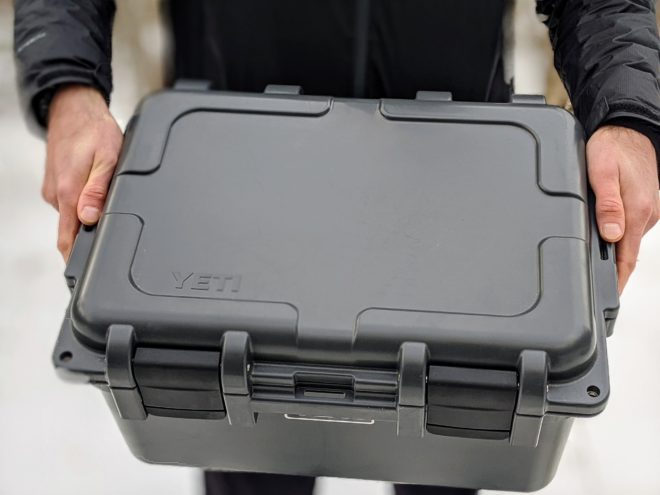
Alternatively a duffel bag works well to hold gear. That is until you start trying to carry camera gear or fuel bottles in the back of a truck. And with the exception of a very few duffels, none are fully waterproof.
In contrast, both of the cases I’m considering here are very light, can take a helluva beating, organize well and can be carried with ease. Now, no matter what I’m doing outside I dutifully have a hardsides gear box with essential equipment in tow.
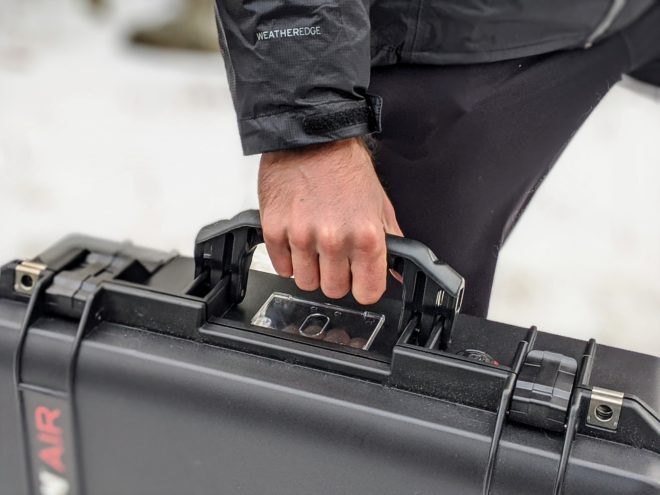
The Contenders
First up we’ve got the venerable Pelican 1525 Air Case. Perhaps more than any other brand Pelican is known for incredibly well built hardsides cases of all shapes and sizes, loyally recommended by photographers and adventurers across the globe. For this head to head I’ve decided to use their 1525 Air Case. It’s a practical sized case in their new Air line that offers the same Pelican durability at a fraction of the weight.
Dimensions – LxWxD: 22x14x8.5’’
Volume – 25.7 L
Weight – 6 lbs
Price – $180.95
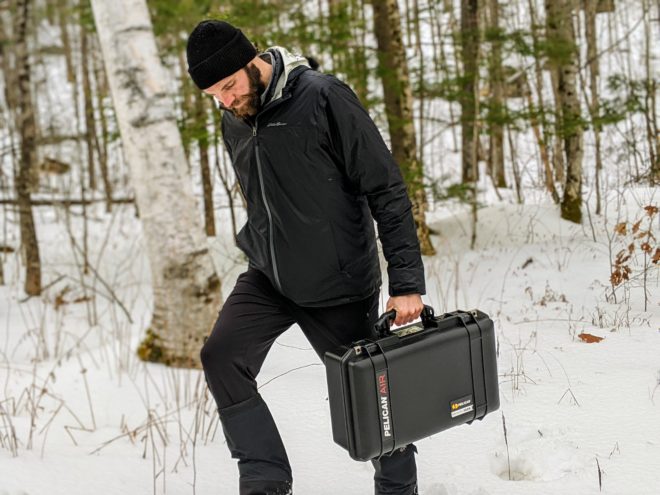
Second we’ve got Yeti’s new LoadOut GoBox 30. Yeti redefined what a rugged-as-heck cooler is, so it only makes sense they would try their hand at a gear box. Unsurprisingly the GoBox 30 is built with many of the same features that have made their coolers so beloved.
Dimensions – LxWxD: 20.5×14.5×11’
Volume – 30L
Weight – 11 lbs
Price – $250
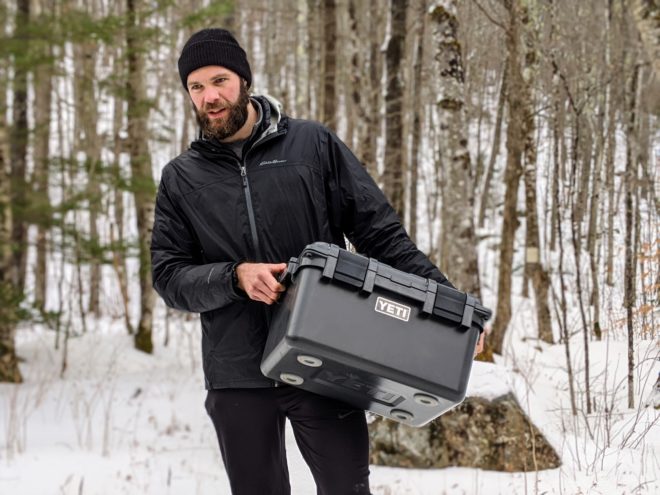
Looks – Pelican 1, Yeti 1
Both of these cases go with a less is more mentality when it comes to design. Because both cases are rotomolded they’re really just solid pieces of plastic with hinges and latches, which is to say very simple. Both cases have a protruding plastic lip which the hardware is recessed into.
Along with their subdued color schemes, both cases strike the utilitarian cord very well. Really the only thing that catches your eyes are the words “Yeti” or “Pelican”, depending on which case you’re looking at.
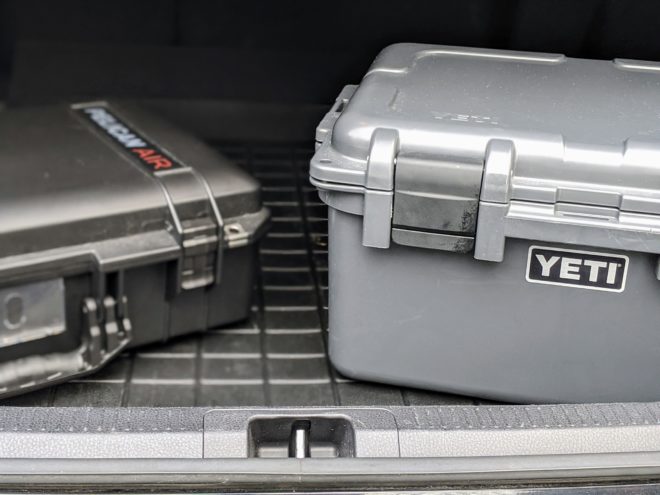
That said, both cases have the option to stand out if needed. The Pelican can be purchased in bright yellow and orange colors. The Yeti can be had in white.
Overall both cases are nearly identical when it comes to looks. The Pelican looks slightly more tactical while the Yeti would look less out of place in my living room. I’m splitting hairs here though so I’m calling this one a draw.
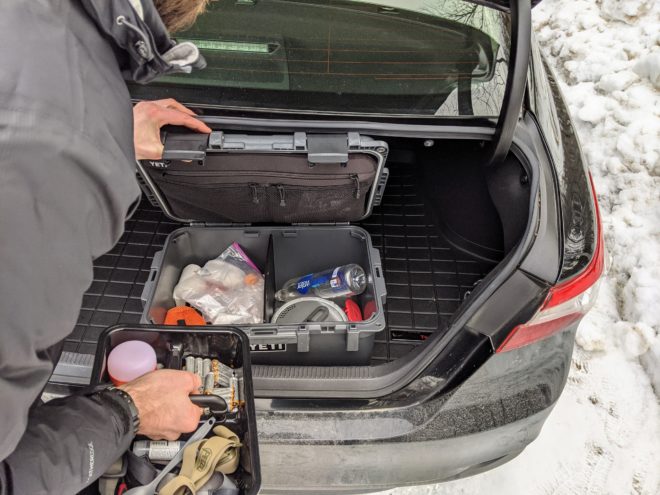
Durability – Pelican 1, Yeti 0
For 99% of people out there either of these cases is going to be plenty durable. Both are constructed with similar methods, have heavy duty hardware, and will keep their contents dry in a downpour. That said, for the remaining 1% of people the Pelican wins. These cases are pretty much standard issue for military and law enforcement after all.
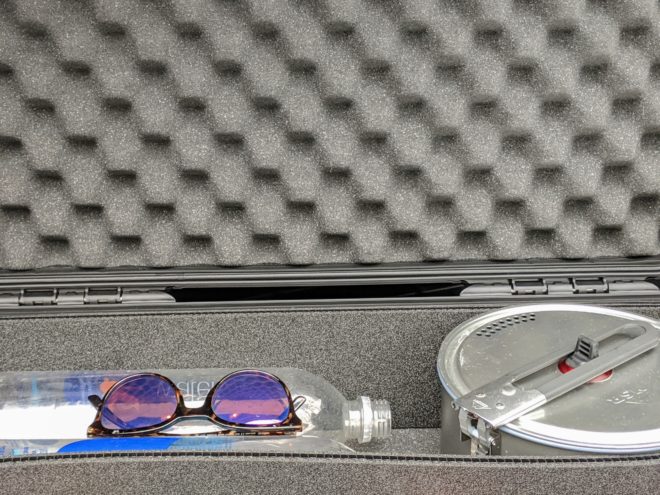
The main reason we’re giving Pelican the win here is because their case is not just water resistant, but fully waterproof. While I haven’t totally submerged a Pelican in water, I wouldn’t think twice about doing it. What’s more, the Pelican also is built to meet standards for heat, dust, vibration, and cold durability (side note, the test results with pictures are available for every case). Do most people need this protection? Probably not, but it’s tough to ignore.
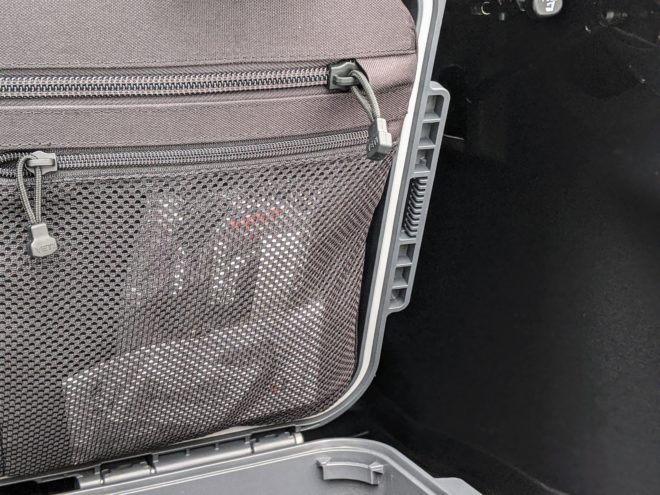
Mobility – Pelican 0, Yeti 1
A quick caveat before we dive into the mobility. These two cases do not have the same form factor which makes comparing how they carry an apples to oranges comparison. The Pelican is more rectangular and meant to be carried at your side with it’s single handle. The Yeti on the other hand is more of a square shape and designed to be carried with two hands in front of you thanks to a pair of grips on the side of the case.
All things considered, we think this is still a fair point to compare because most gear boxes aren’t carried by hand all that far.
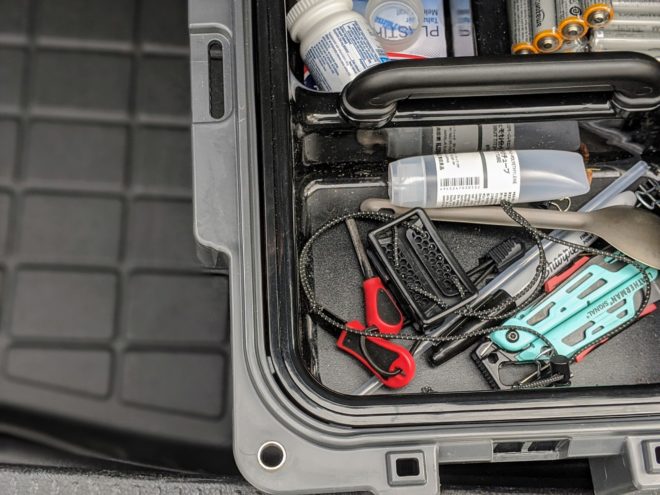
I’ve found that the Pelican is easier to stack thanks to a pair of grooved ridges on the top and bottom of the case. They’re not pronounced enough to affect the stability of anything stacked on top of them, which helps when loading the back of a car. Additionally, the top of the Pelican contains two grooves to secure the cases with a pair of straps.
However, I’m giving the edge to Yeti on this one because of the rubber feet on the bottom of the case that prevent it from sliding around. This is a super useful feature when the case is sitting in the bed of a truck or I’m sitting on it, it’s impossible to slide. The Pelican does have slightly raised feet on the bottom but they’re unlined so don’t provide any grip.
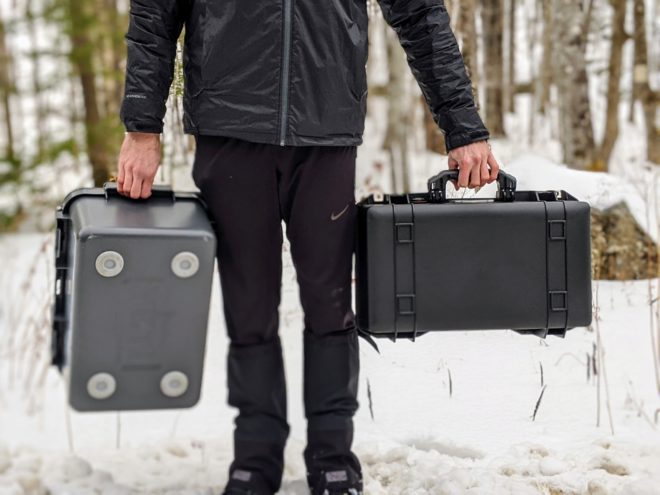
Space and Volume – Pelican 0, Yeti 1
Again, these two cases differ in their form factor which means that they’re going to be carrying differently. However both cases provide us with the same starting point, a cavernous internal area that is completely impervious to the outside world. On both cases latches and hinges are all mounted on the outside, meaning that the interior space is completely unencumbered.
The shape of the Yeti is deep enough to carry bulky and awkwardly shaped objects with ease. Camping stoves and pots and pans all disappear effortlessly into the depths of the Loadout GoBox 30. We’ll get to this more later, but Yeti also provides a couple of options for how to maximize the space. Included with the case is a lid mounted zippered pouch, a center divider and a stacking shelf that fits on half of the case.
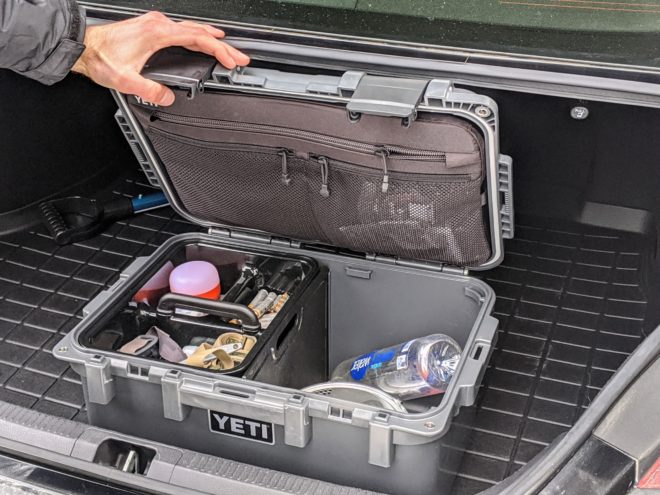
I’ve found these organization options perfect to allow to Yeti to work well as a catch all gear box. Maps and paper in the lid pouches, fuel and bottles on one side of the case and small and loose items on the other. Basically any items I would need for a weekend in the woods are all organized pretty darn well with the Yeti. I can just grab the entire case and worry about sorting out exactly what I need at the trailhead.
The Pelican on the other hand provides and equivalent amount of useable space (form factors aside) but requires you to choose how to deck out the case. I’ve opted for the TrekPak Divider system, a reconfigurable foam material with a foam insert for the lid. For organizing camera equipment or electronics this system works flawlessly. Additionally Pelican offers a vast amount of other organization options for this case. For anything I can think of, Pelican offers some way to carry it.
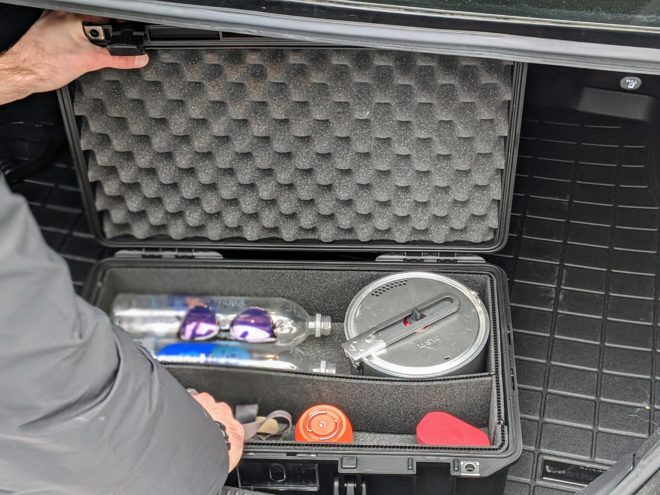
However all this precise customization can easily start to become too much of a good thing. The Pelican system works great when I know exactly what I need to carry. However when I’m looking to throw a bunch of random equipment in the case, it can quickly become a futile effort trying to reconfigure the case to try and fit everything. I find that the Pelican can fit anything but not everything, whereas the Yeti works much better as a general catch all gear box.
Weight – Pelican 1, Yeti 0
Again, this isn’t quite apples to apples given the different form factors of the cases. However, the Yeti is only 5 liters larger than the Pelican but weighs nearly twice as much (11 vs. 6 lbs).
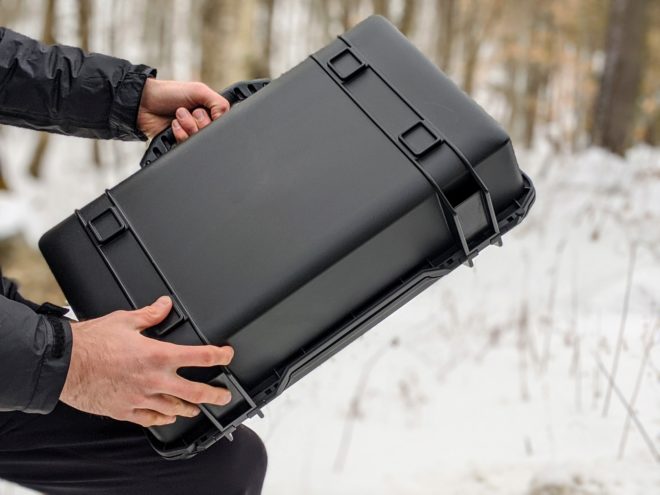
With hardsides gear cases I’m usually carrying heavier equipment, namely camera lenses or electronics. As a result these cases can start to get very heavy very quick. Therefore, even if they’re not carried too far by hand, the base weight of the case is a big consideration.
This is a category that was going to be difficult for Yeti to win. Pelican claims that their Air line of cases is 40% lighter than other polymer cases. Anyone who has held a Pelican Air case can attest to this. For the 1525 case, 6 lbs is incredibly light for such a durable case.
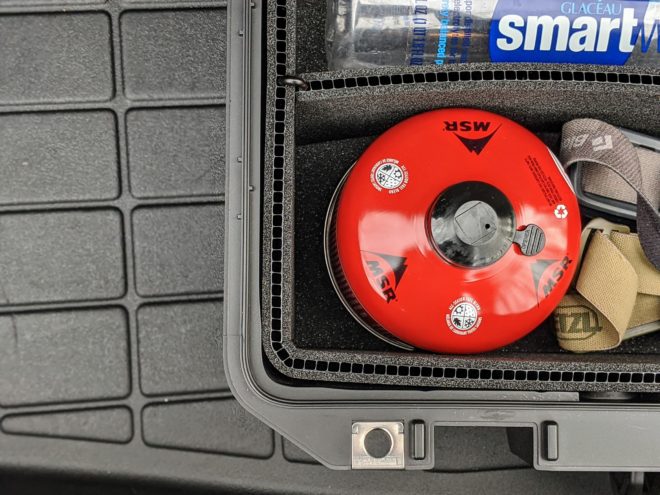
That said, the 11 lbs of the Yeti GoBox includes all internal organization pieces. The 6 lbs of the Pelican is just the case only. For this head to head I’ve configured it with their TrekPak divider system. While this and other organization systems aren’t going to be all that heavy, the 6 lbs base weight might be closer to 7 lbs. Still, that’s stupidly light.
Features – Pelican 0, Yeti 1
For simple plastic boxes, both design teams at Yeti and Pelican have put a lot of thought into how best to deck out these cases, something they come at from two different angles.
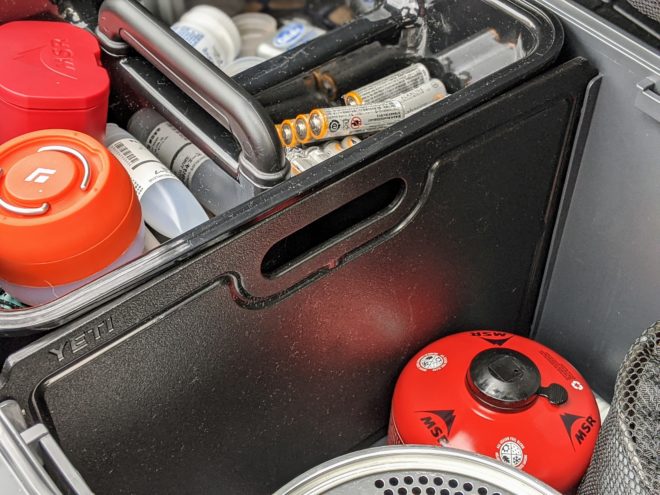
For Yeti, the LoadOut GoBox contains a couple of included accessories, a few different color options for the box, and one size. That’s it. Pelican on the other hand includes an enormous amount of organizational accessories to choose from, in addition to around 20 different sizes of cases to choose from.
While the sheer amount of options are enticing with Pelican, they don’t come cheap. And as mentioned above, they are more aimed at carrying specific items rather than catching anything I throw into the case. From an overall feature perspective, Pelican wins hands down. However in the context of a gear box, Yeti provides exactly what I need and nothing more.
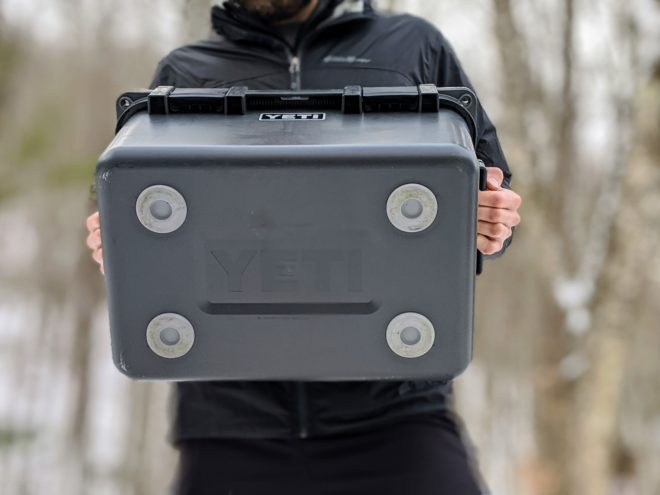
Overall/Winner – Pelican 3, Yeti 4
As indicated by the close score, when looking for a case that can easily organize, protect and carry your gear either of these cases will work great. For those looking for endless size and carrying options in the most bombproof case out there, the Pelican Air Case is hands down the way to go. But for the majority of gear junkies and weekend warriors, the Yeti LoadOut GoBox finds the sweet spot between durability, customization, and ease of use.
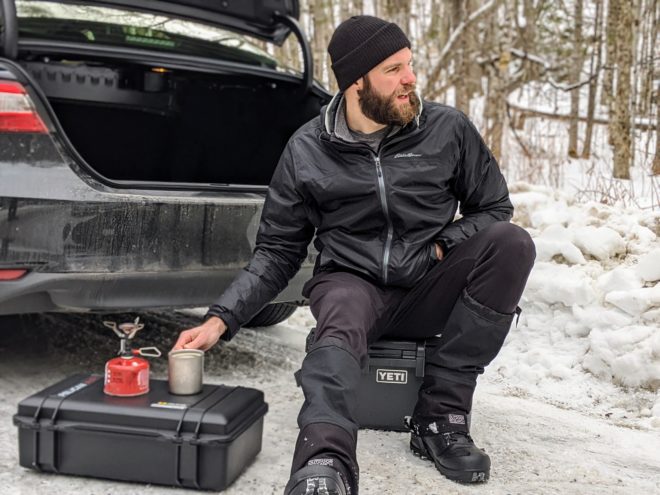





 Carry Awards
Carry Awards Insights
Insights Liking
Liking Projects
Projects Interviews
Interviews






